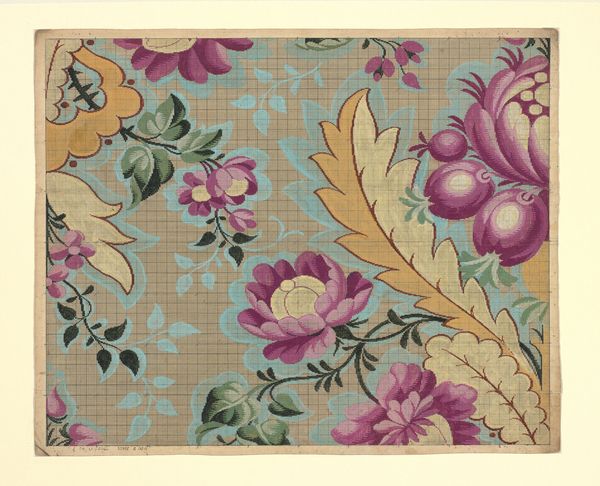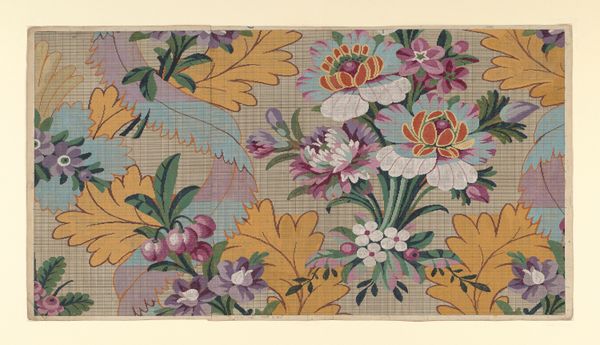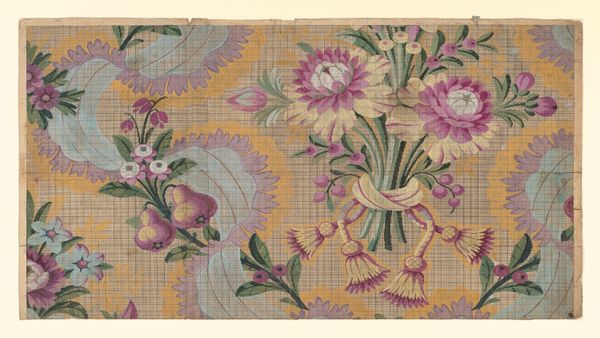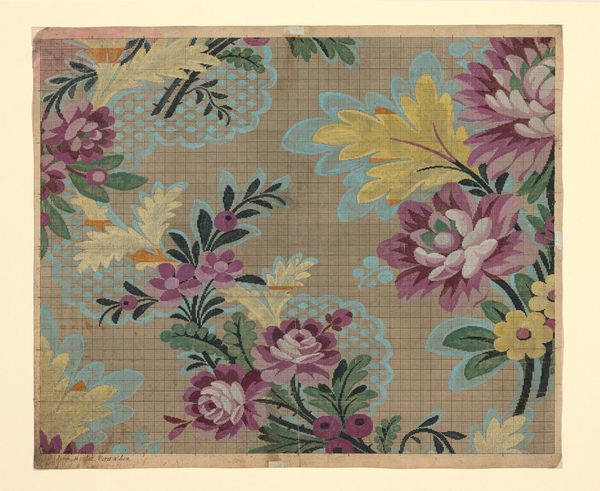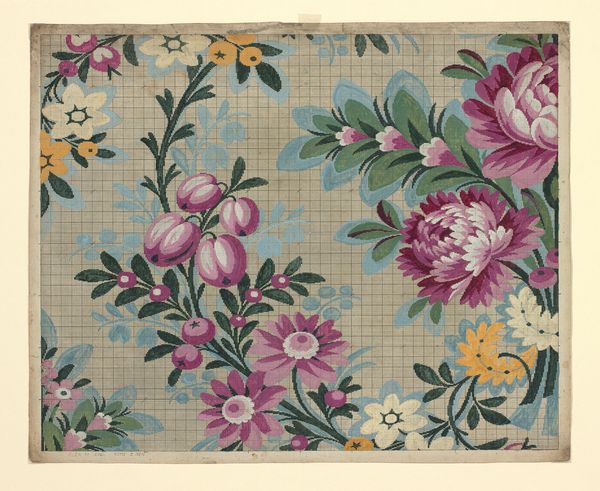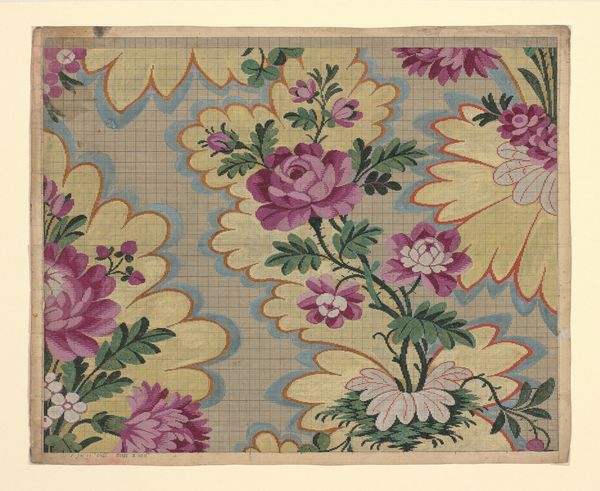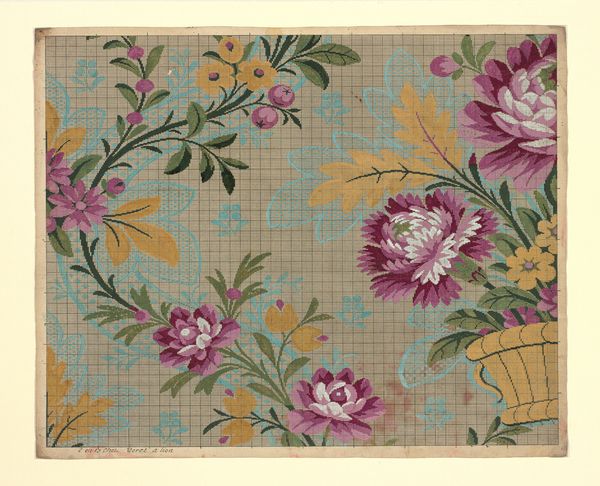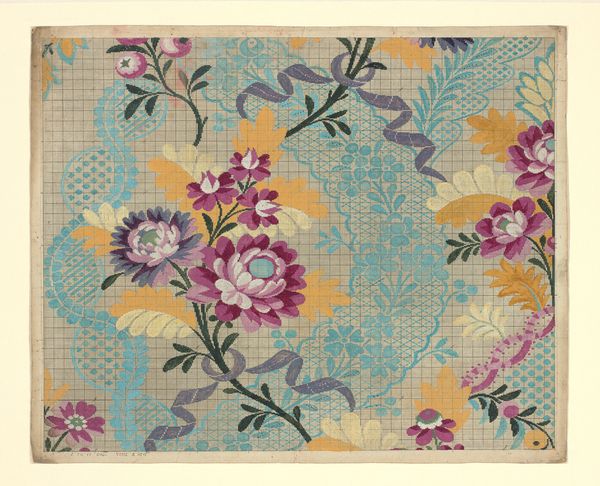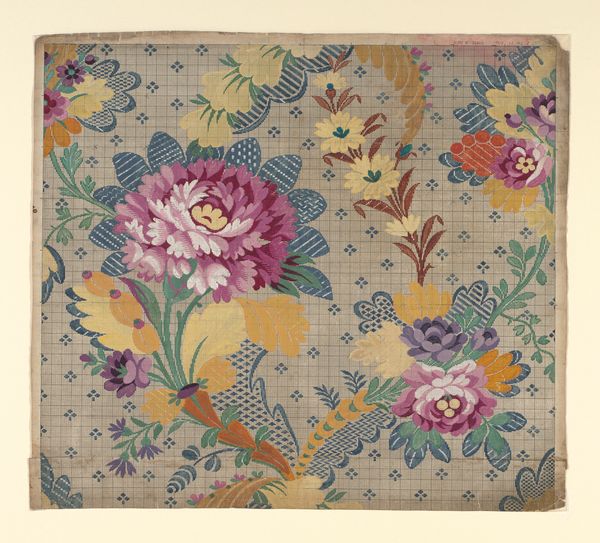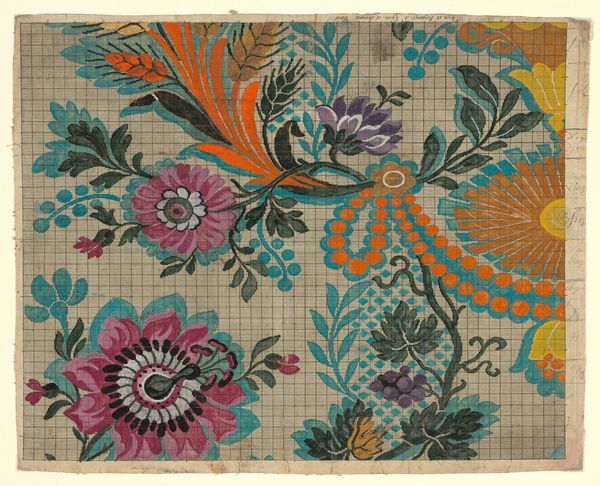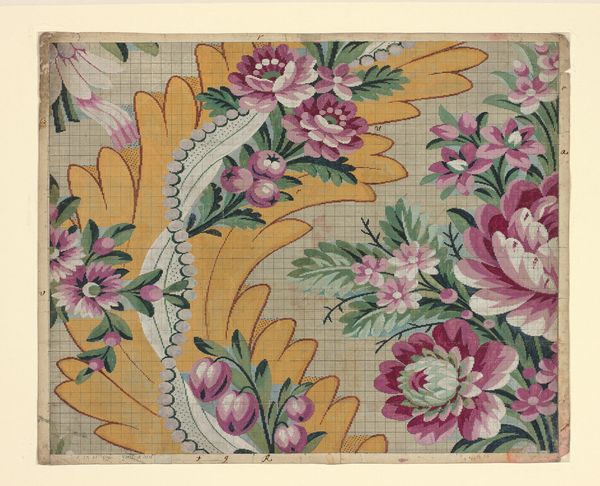
drawing, etching, textile, paper, ink
#
drawing
#
etching
#
textile
#
paper
#
ink
#
decorative-art
#
rococo
Dimensions: 435 × 541 mm (image/plate); 448 × 564 mm (sheet)
Copyright: Public Domain
Curator: This intricate piece, residing here at the Art Institute of Chicago, is a "Mise-en-carte (Point-paper)" dating back to the 1760s and attributed to Pierre Huilliot. It incorporates drawing, etching, and the meticulous rendering of a textile design through ink on paper. Editor: It has an organized visual impact, with those bright botanical images emerging out of an ordered background. You can almost touch the silk velvet, can’t you? The paper support makes this an artifact, a physical pattern! Curator: The "mise-en-carte" itself—that grid system you're referring to—is deeply significant. It functioned as a codified guide for weavers, translating artistic vision into a language that Jacquard looms could interpret, impacting textile production of the time. It became a cultural symbol, allowing anyone to have those luxury flowers in their home. Editor: Yes, exactly. And look at how it democratizes art! This piece allows the reproduction of designs and shows how it can make them widely available. We see labor abstracted into aesthetic pleasure. Consider the thousands of yards this one drawing could potentially inspire! Curator: It reflects the Rococo fondness for naturalism and the decorative arts while showing how such styles could be captured and passed down. I see layers of meaning embedded in each stylized flower and curlicue. Notice also how each color carries connotations and expectations with its specific value, something that must translate into its eventual tapestry incarnation. Editor: Right. And what’s equally remarkable is that it blurs the lines between high art and industrial design. We often think of textiles as mere decoration, but this piece underscores its economic and cultural power of it, like the history of work, technology, art all stitched together! Curator: Indeed. Viewing this work allows us a window into both the aesthetics and technologies of the 18th century. And to its broader resonance today, the Rococo themes keep circulating as an expression of delight in ornament! Editor: Exactly, to fully grasp this delicate piece is to embrace both its artistry and its material and cultural context. A lovely reminder of how production and vision intersect.
Comments
No comments
Be the first to comment and join the conversation on the ultimate creative platform.
